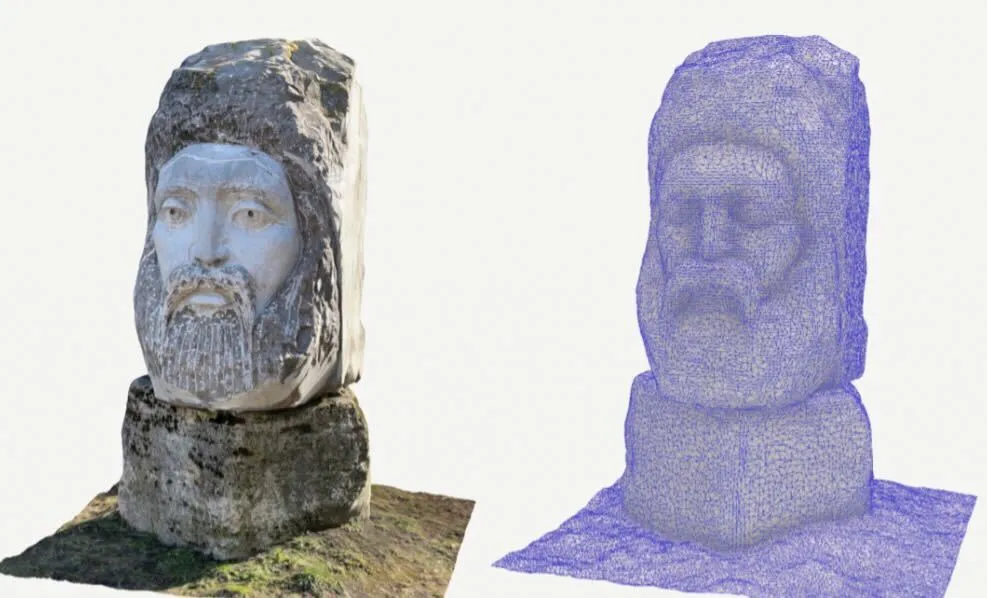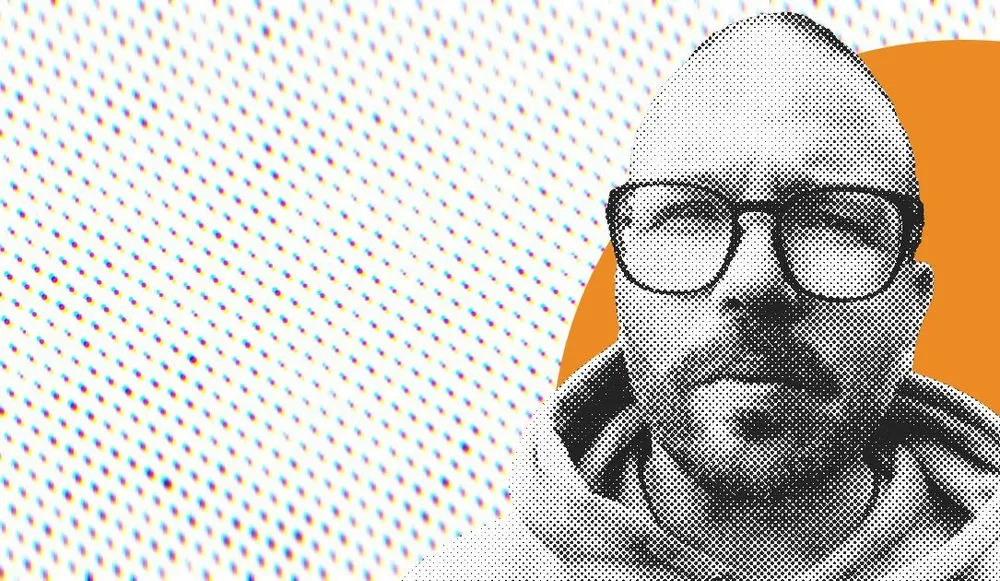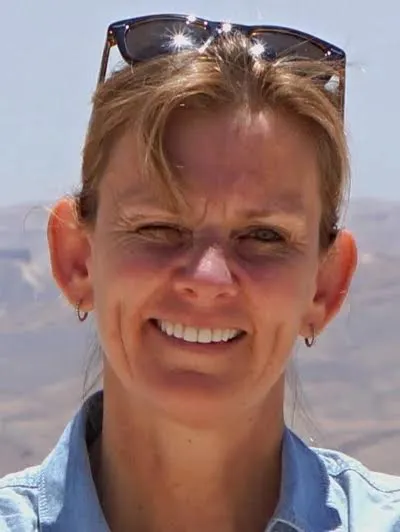Tao Thomsen and the effort to back up what makes Ukraine uniquely Ukrainian
Since the beginning of Russia’s invasion of Ukraine, government officials, independent media organizations, and nonprofits have accused Russia of deliberately targeting churches and libraries and looting its most important museums. The intentional destruction of cultural heritage is a war crime, and Ukrainians say this is nothing less than an attempt to erase what makes Ukraine uniquely Ukrainian.
Tao Thomsen is the creative director of innovation at Virtue Futures, a tech-based innovation lab linked to the VICE Media Group, and he has assembled an army of culture warriors who are determined to prevent the Russians from winning this battle.
The Click Here podcast spoke to Thomsen about how he intends to do that with everything from 3D imaging technology to using the cloud to back up pieces of Ukrainian heritage.
This conversation has been edited and condensed for clarity.
CLICK HERE: You’re Danish. How did you get involved with the preservation efforts in Ukraine?
TAO THOMSEN: [Virtue Futures] followed the war closely when it broke out. And we also look for the oddities or the paradoxes in any ongoing sort of social development because that's usually where we can go in with the skill set that we have and make a difference.
The paradox that we noticed here was that we saw these people made valiant efforts to protect statues and other physical manifestations of their culture. They’d use encapsulations like bubble wrap, moving blankets and gaffer tape — which obviously would not do much good against an artillery shell — but at the same time, there was a driving force here that we needed to dig deeper into and understand.
CH: Why do you think so many Ukrainian monuments and infrastructures were targeted? Do you get the sense that the Russians were trying to erase Ukrainian culture?
TT: There's collateral damage in every war, but in [Ukraine] there was a suspicious amount of collateral damage. Some of [the military strikes] were miles off from any nearby conflict zone. There was a monument of the Ukrainian poet, Charles Shevchenko, which was hundreds of kilometers away from any combat zone. [But] a stray rocket hit that, which obviously makes you think about the importance of that.
[Ukrainians] move into any natural or manmade catastrophe [with a priority] to safeguard the cultural heritage. One of their representatives was on the radio speaking to this and replied in words that just completely burned into our minds: “Destroying a country's national heritage is the fastest way to erase the national identity.” And suddenly it all made a lot of sense.
Because in this propaganda, one of the central claims was that Ukraine is not a real country. It's just a wayward Russian province that should be brought back into the fold. It was a very strong — and I believe false — claim that they did not have their own culture. And in that context, I think erasing the national history, that becomes very, very scary.
CH: So how does BACKUP UKRAINE — an app made by Virtue Futures and 3D scanning company Polycam — help with preservation efforts in Ukraine?
TT: You take two elements that are incommensurable. And then the second you put them together, they're inseparable. And in this case, it was the idea of making a backup of culture. And of course that seems like nonsense; like you can't put a statue in the cloud.
But then we stumbled upon this really interesting technology developed by a small company in California called Polycam who managed to create a mobile application that does something that used to be reserved for big movie studios or game development studios. So what they figured out is that they used machine learning to put all of that computation that goes from taking regular optical images and turning them into a 3D model.
We already know what to do with stuff that we don't want to lose.
You don't put it in your basement or put it in storage. You take a digital copy of it. We do this with everything that's important to us. We do it with our vacation photos, wedding invitations, and important documents. We know that the only way to make sure that you never lose it is by taking a digital copy and putting it in the cloud where it can't get lost. It can't get flooded. And also it can't get bombed.
CH: How accurate is the imaging?
TT: It's surprisingly accurate.
CH: It sounds incredibly savvy and helpful to preserving the culture in Ukraine, but are there any complications with the imaging?
TT: Of course. The main drawback of this compared to the professional way of doing photogrammetry is that you can't make as big pieces as you can with a professional setup [with] a laser scanner and all of these tools and drones.
With the app, you can scan stuff that's bigger than a mouse and smaller than an elephant. If you need to go larger or smaller than that, you need specialist equipment and you need specialist training. But within that scale, I would say that it's 90% as good as the professional results.

[Our 3D imaging] has depth data. It has texture. It has what's called a point cloud, which is sort of like three dimensions. It has the key location like the GPS data, the orientation, and timestamp. So there's a surprising amount of data and metadata in every scan that you can utilize.
It will never be as good as the work done by professionals, but it is surprisingly close, considering how easy it is to do.
CH: How accessible or easy is the application to use?
TT: I was scanning with my own daughter who was five at the time when we launched, and she picked up the basics of this in two minutes and started scanning statues in a local park. The quality is as good as any adult can do it. And I think that was the real breaking point. The breakthrough was that anybody can do this. You don't need any training.
I mean, it's a lot of really, really, really hard mathematics that's behind it. It goes out behind the scenes up in the cloud to make it seem like child's play. Anybody who has a phone is now an archivist. And that to us was the really transformative point.

CH: Does BACKUP UKRAINE have the capability to backup images that aren’t monuments or large integral structures? If so, what’s the importance of backing up images that may go under the radar?
TT: For sure. I think the first thing that happens once you make cultural preservation a democratic endeavor, once you put that into the hands of everyone and not just a select few experts, is that you get really surprised by what people view as worthy of preservation. Once we put this in the hands of people, for a lot of people, their culture and their history was something very different than what you'd see in history books.
When we [at Virtue Futures] got into this, we were a little bit annoyed like, “Why are people scanning all of these insignificant items?” We even called the developers [to] say, “Isn't there a way that we can hide all of this insignificant stuff?” And luckily, they talked us out of it because when we spoke to people down there, we realized that actually these places have deep significance.
For example, [it] popped up all of a sudden [that] every skin was a cupcake. We were baffled. [We] called somebody saying, “What's up with the cupcakes?” And what we don't realize is that they're on the Orthodox calendar instead of the Roman calendar. So Easter falls differently down there. And Easter to Orthodox Christian Ukrainians is like Christmas is down here.
It's the main family gathering of the year. And a key point of that celebration is eating these cupcakes. Then it dawned upon us that for a lot of people, that might be the last time in a very long while that they get to have this experience of normalcy, that they get to see extended family and all be together in something that feels a little bit homely.
I think that's very beautiful, that we seem to sometimes oversee how personal and how intimate culture really is when we take a little too much academic perspective on it.
CH: After the war, what do you think could be done with all of these backup images?
TT: First, for a lot of these older statues in particular, you don't have the molds anymore. You don't have the blueprint for reconstructing them. And in the case of cast statues, you can literally recreate the mold from the 3D data.
Then the data can serve as a reference material, like we saw when Notre Dame burned down. Obviously, they didn't have blueprints for that either. That's a very old building.
And some of the best data that you had didn't come from the history books or archeologists. [The data] came from a computer game where they had meticulously laser scanned the entire Notre Dame to use it as a game level. It seems very frivolous, but that was actually the best source of data for the interior dimensions of the Notre Dame.
CH: We spoke to someone from the World Monuments Fund who told us another unexpected positive for sustaining the 3D imaging data. It decreases the cost of rebuilding by about 20% because you don't get surveys and because you know, precisely, the materials you need to rebuild.
TT: Exactly. The reason why people are doing them in Europe and in the [United] States as well is to rationalize and optimize restoration projects, [because] then you have an exact count of how many tiles or whatever that you need to build something. That whole ecosystem already exists like AutoCAD and all this builder software. There's an entire world of applying 3D data to construction projects that's very well developed. And I think that's especially relevant when you look into reconstructing bigger things like architecture mostly.
I think [keeping the 3D data beyond wartime] has a value in and of itself to have a virtual copy of something. Even if [a book’s] original manuscript is lost, having the pages scanned has a tremendous [impact]. I think having a virtual representation of any cultural artifact is obviously not the same as having the real one, but it has value in and of itself.
It prevents something from being erased, but it also allows it to travel much further. Like our friends from Skyron, they scanned a ton of stuff that will probably never be destroyed, just as a way of increasing the world's appreciation of Ukrainian architecture. Because suddenly you can experience it even when you're not in Kyiv. So, in that sense, you have a representation of something or symbol of something that can travel in a way that a church never can. So, I think that that in itself has a value, but most definitely in a way to ensure that it can never be erased.
Dina Temple-Raston
is the Host and Managing Editor of the Click Here podcast as well as a senior correspondent at Recorded Future News. She previously served on NPR’s Investigations team focusing on breaking news stories and national security, technology, and social justice and hosted and created the award-winning Audible Podcast “What Were You Thinking.”



